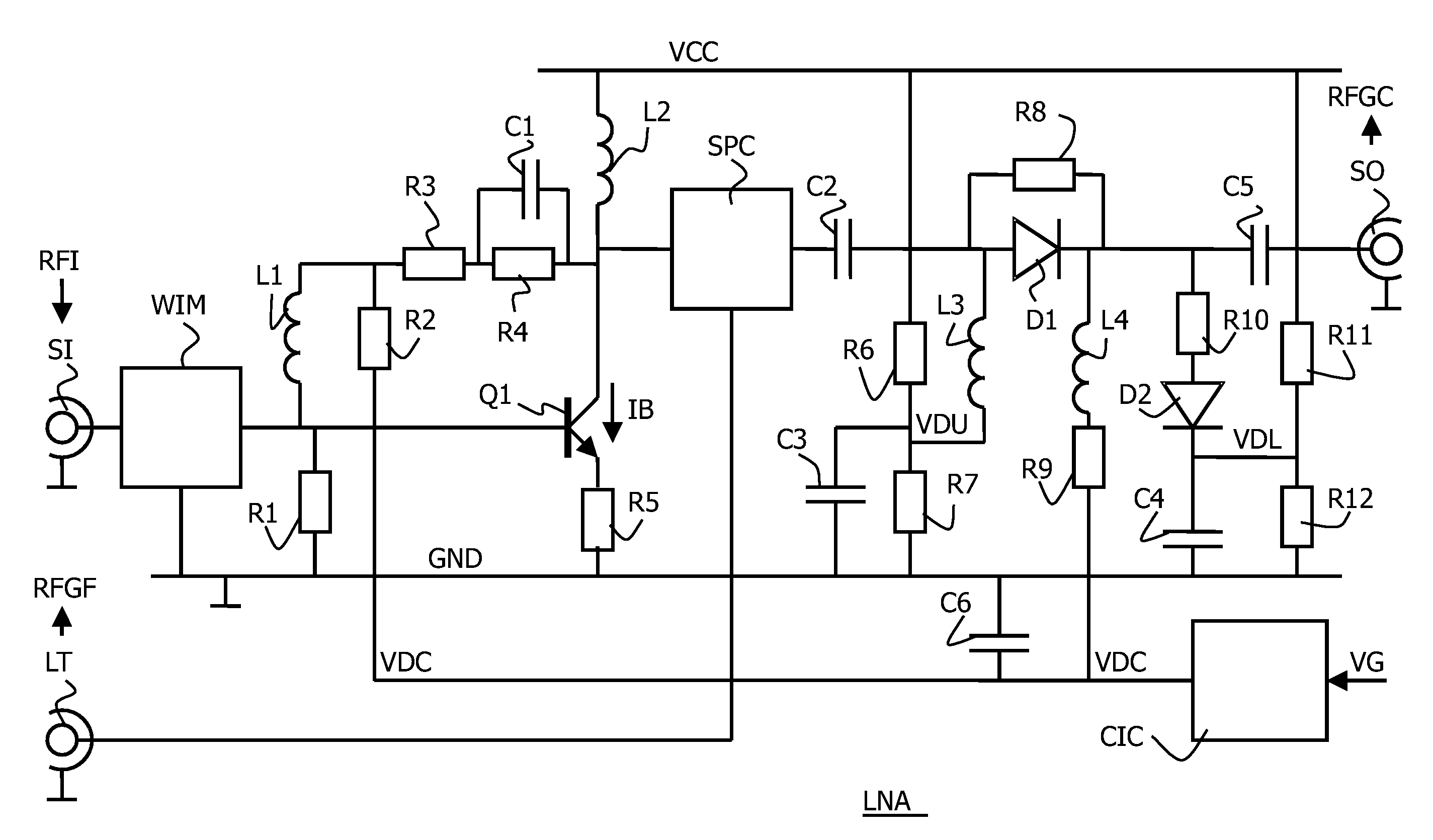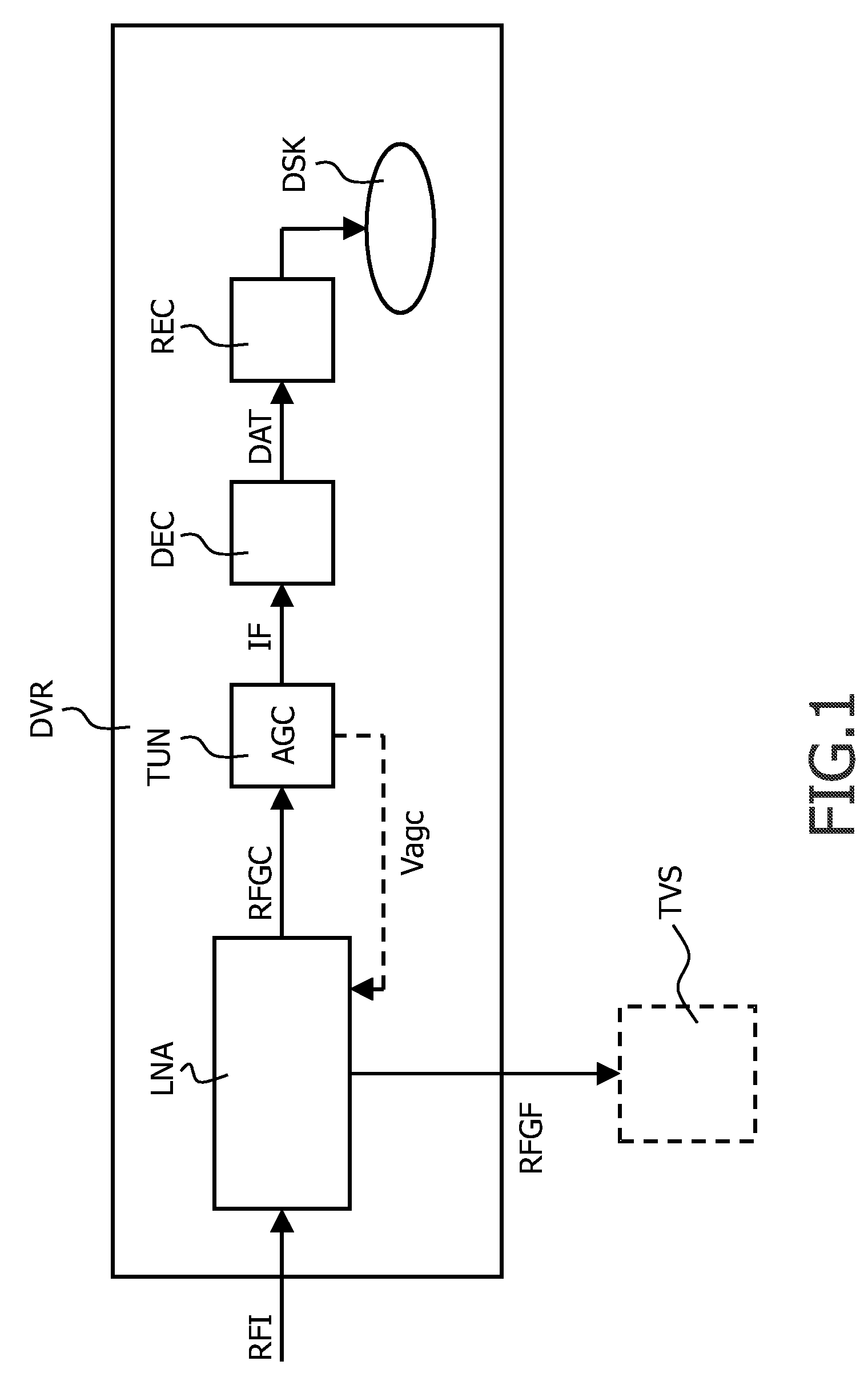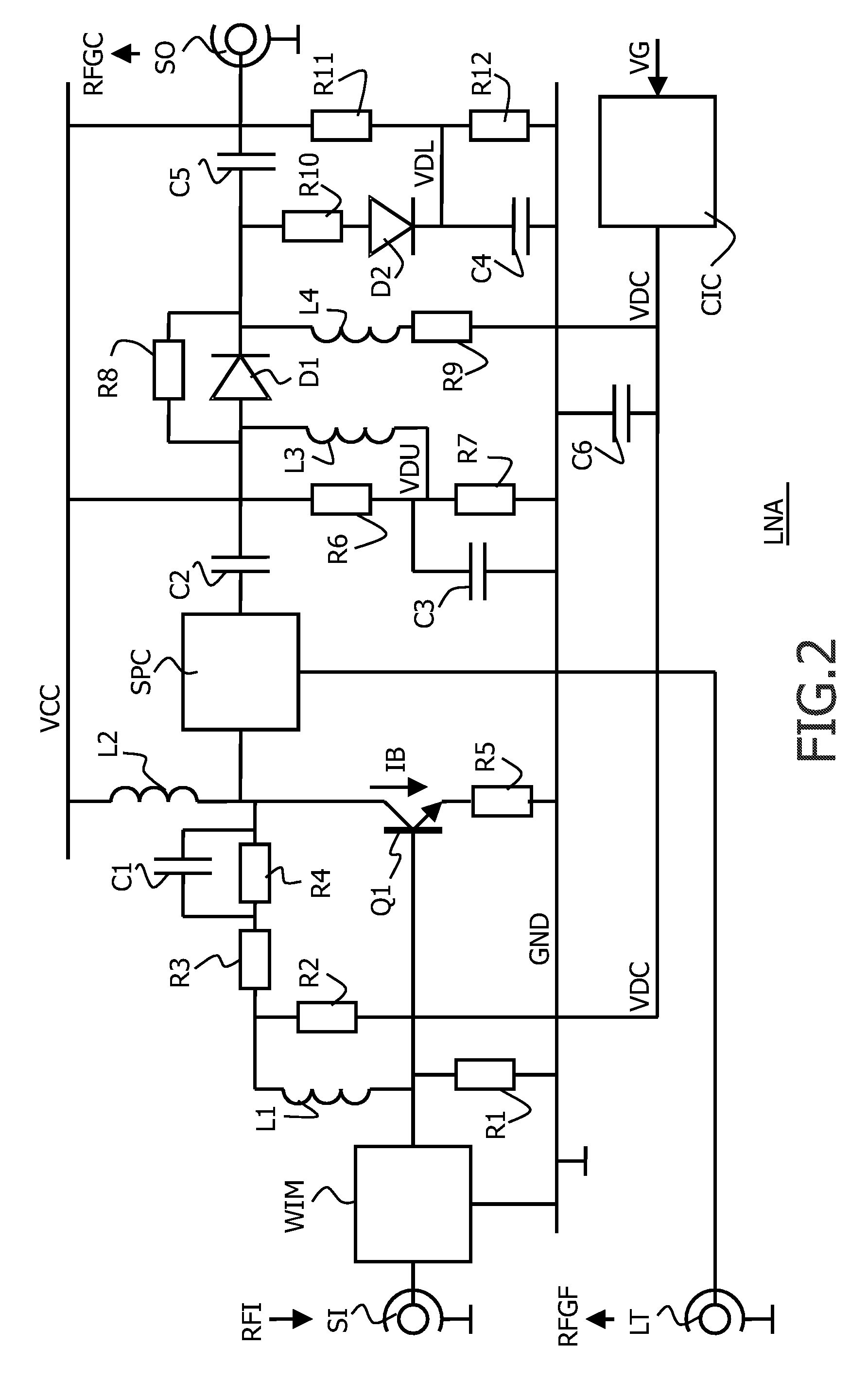Receiver having a gain-controllable input stage
a gain control and input stage technology, applied in the field of receivers with gain controllable input stages, can solve the problems of reducing the extent to which the subsequent stages contribute to the overall receiver noise, affecting the reception quality, so as to achieve an acceptable signal-to-noise ratio, less attenuation, and reduced attenuation within the input stage
- Summary
- Abstract
- Description
- Claims
- Application Information
AI Technical Summary
Benefits of technology
Problems solved by technology
Method used
Image
Examples
Embodiment Construction
[0012]FIG. 1 illustrates a digital-video recorder DVR, such as, for example, a digital versatile disk (DVD) recorder or a hard disk drive (HDD) recorder, or a combination of both. The digital-video recorder DVR may be comprised in, for example, a so-called set-top box for a cable network. The digital-video recorder DVR will typically have a mains supply.
[0013]The digital-video recorder DVR selects a desired signal present within a radiofrequency spectrum RFI received an input. The desired signal conveys data. The digital-video recorder DVR records this data on a disk. The digital-video recorder DVR may be coupled to a television set TVS, which is illustrated by means of broken lines, or any other type of receiver.
[0014]The digital-video recorder DVR comprises a gain-controllable input stage LNA, a tuner TUN, a decoder DEC, and a recorder REC. The gain-controllable input stage LNA amplifies the radiofrequency spectrum RF. The gain-controllable input stage LNA provides two output sign...
PUM
 Login to View More
Login to View More Abstract
Description
Claims
Application Information
 Login to View More
Login to View More - R&D
- Intellectual Property
- Life Sciences
- Materials
- Tech Scout
- Unparalleled Data Quality
- Higher Quality Content
- 60% Fewer Hallucinations
Browse by: Latest US Patents, China's latest patents, Technical Efficacy Thesaurus, Application Domain, Technology Topic, Popular Technical Reports.
© 2025 PatSnap. All rights reserved.Legal|Privacy policy|Modern Slavery Act Transparency Statement|Sitemap|About US| Contact US: help@patsnap.com



